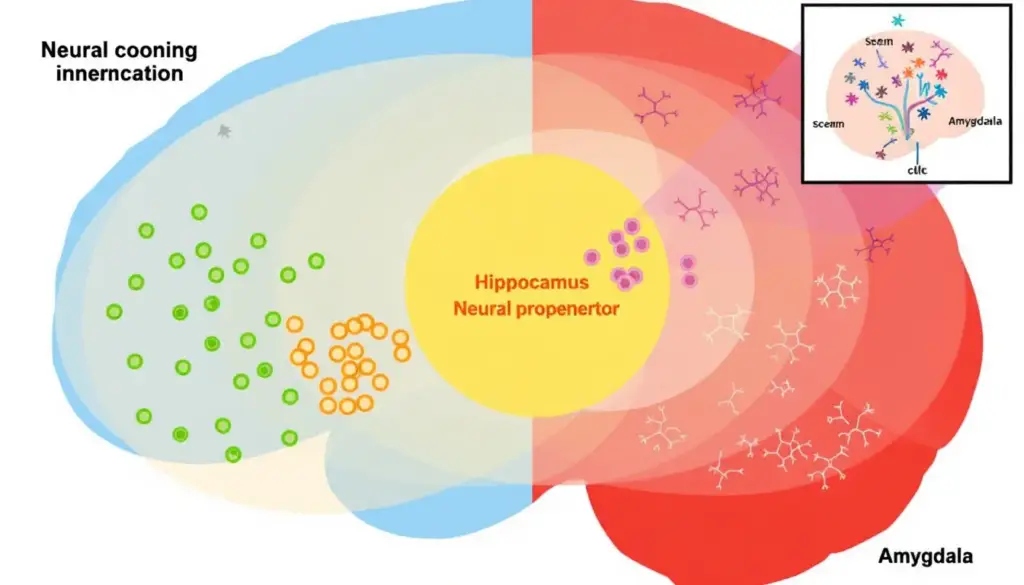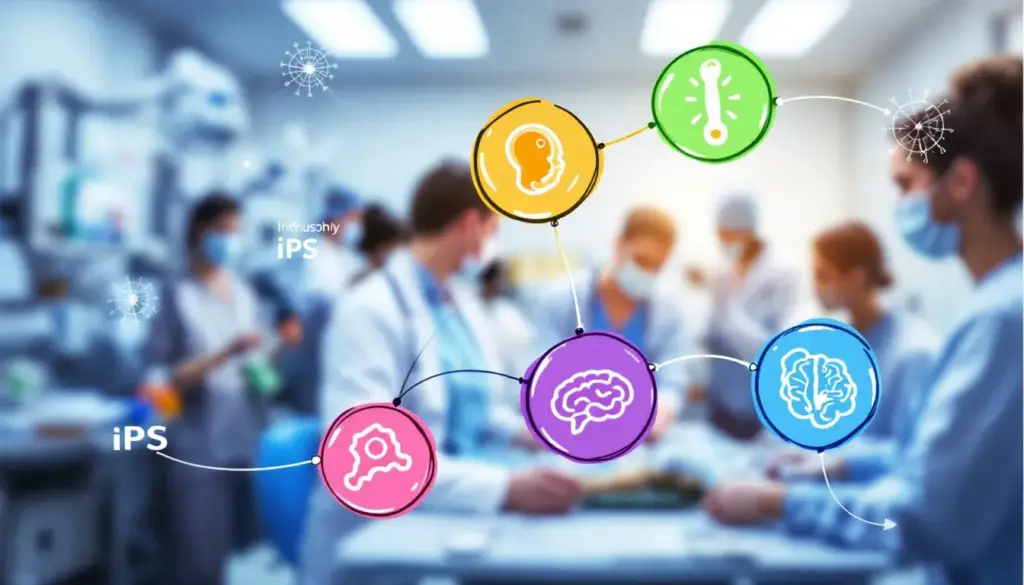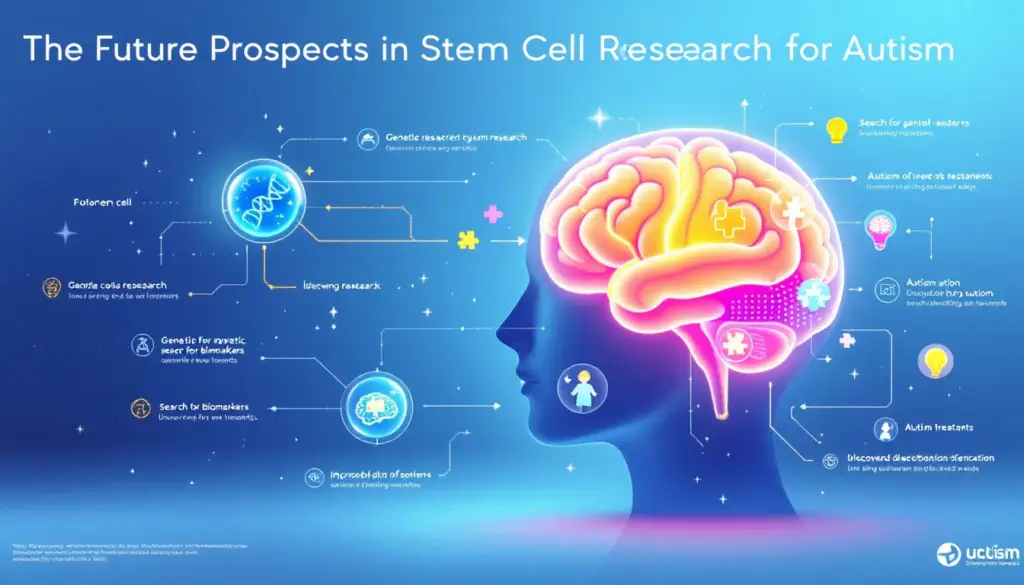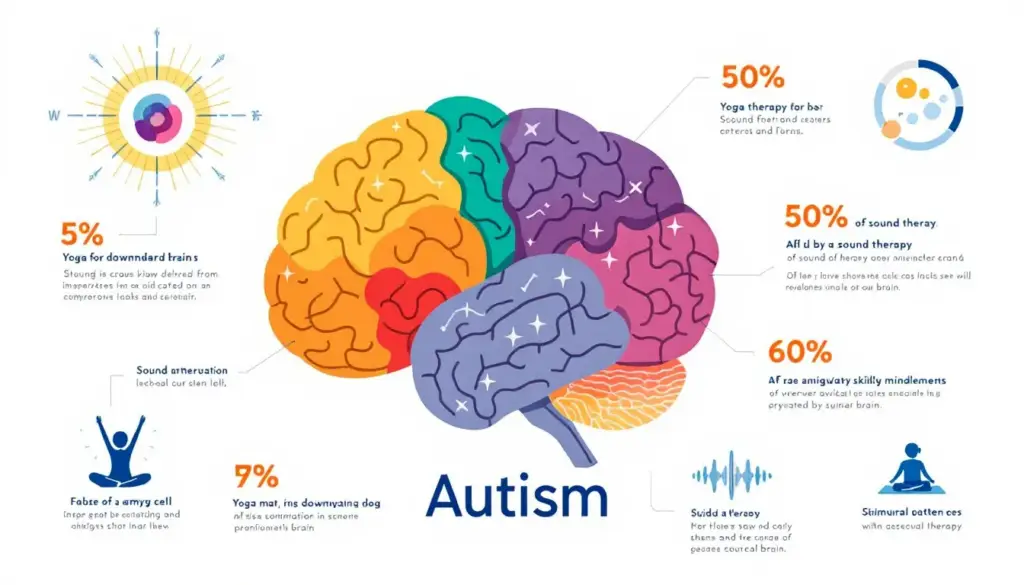Curious about whether stem cell therapy can help treat autism? In this guide, we explore the science behind stem cell therapy, its current research status, and what parents need to consider before pursuing this experimental treatment. Discover comprehensive insights in your guide to autism and stem cell therapy treatment.
Key Takeaways
Stem cell therapy shows potential in treating autism by targeting inflammation and immune system function, but lacks sufficient scientific evidence to validate its effectiveness.
The therapy utilizes various stem cells, including those from umbilical cord tissue, with a focus on individualized treatment protocols, though procedures remain experimental and without standardized guidelines.
Parents should carefully consider the potential benefits and risks of stem cell therapy, emphasizing the importance of choosing a reputable clinic and understanding the high costs and insurance limitations associated with the treatment.
Understanding Stem Cell Therapy

Stem cells are the body’s master cells, the building blocks from which all organs and tissues develop. They possess the remarkable abilities to self-renew and differentiate into specialized cells, making them a cornerstone of regenerative medicine. These unique properties have opened up a world of possibilities for treating various conditions, including autism spectrum disorder.
There are two primary different types of stem cells: pluripotent stem cells and tissue-specific (adult) stem cells. Pluripotent stem cells, such as embryonic and induced pluripotent stem cells, have the potential to become any cell type in the body. In contrast, tissue-specific stem cells, found in various adult organs, are multipotent and are responsible for replenishing specific cell types.
Understanding these basics sets the stage for exploring how knowledge of stem cell therapy can explain the idea of how it might help treat autism, for example.
The Science Behind Stem Cell Therapy for Autism

The rationale behind using stem cells to treat autism lies in the complex interplay between the immune system and brain function. Supporters of stem cell therapy for autism claim that the disorder is linked to inflammation and immune system issues. Addressing these factors, stem cell therapy seeks to reduce autism characteristics and enhance behavior, anxiety, social skills, communication, speech, and focus.
Despite these promising claims, it’s important to acknowledge that there is currently no scientific evidence supporting the effectiveness of stem cell therapy for autism. The quality of research in this area is poor, with no good-quality evidence to back up the benefits touted by proponents. This lack of robust data underscores the need for caution and further investigation before considering stem cell therapy as a mainstream treatment for autism.
As parents, it’s crucial to weigh the potential benefits against the lack of conclusive evidence. Although anecdotal reports and preliminary studies suggest promise, the medical community remains skeptical. Determining whether stem cell therapy can truly benefit autistic children requires rigorous scientific research and well-designed clinical trials.
How Stem Cell Therapy Works for Autism
Stem cell therapy for autism primarily focuses on reducing inflammation and improving immune system function. Umbilical cord-derived mesenchymal stem cells, in particular, have shown potential in transforming the immune response from a harmful pro-inflammatory state to a beneficial anti-inflammatory state. These stem cells secrete various healing molecules that promote tissue regeneration and regulate immune function.
The goal of stem cell interventions is to balance the immune system by increasing the production of anti-inflammatory cytokines, thereby mitigating the inflammatory processes associated with autism. While this approach is still experimental, it represents a promising avenue for addressing some of the core challenges faced by individuals with autism spectrum disorder.
Types of Stem Cells Used in Autism Treatment

Several types of stem cells are utilized in autism treatment, each with its unique properties and potential benefits. The two primary types of stem cells focused on in stem cell therapy for autism are mononuclear cells from cord blood and mesenchymal stromal cells from cord tissue. Additionally, mesenchymal stem cells can be derived from the patient’s adipose tissue or bone marrow, offering different sources for these versatile cells.
The process begins with the donation of umbilical cord tissue from healthy mothers after childbirth, ensuring a safe and ethical source of stem cells. These cells undergo thorough screening to ensure their safety and efficacy before being used in therapy. This careful sourcing and screening process are crucial for maximizing the potential benefits while minimizing risks for autistic children undergoing treatment.
Clinical Trials and Research Evidence
The landscape of stem cell research for autism is rapidly evolving, with over 21 clinical trials currently exploring various stem cell types for potential treatments. These trials are assessing both patient-derived and donor-derived umbilical cord blood treatments for their efficacy in improving autism symptoms. However, the results so far have been mixed, with some trials indicating no significant clinical improvements.
One of the major challenges in this field is the lack of standardized treatment protocols, which makes it difficult to compare results across different studies. Research emphasizes the need for long-term studies to evaluate the comprehensive effects of stem cell therapy for autism. Despite the promising initial data, the medical community still classifies stem cell therapy for autism as experimental. This underscores the importance of rigorous scientific research to validate the potential benefits and ensure the safety of these treatments.
Parents express hope and frustration, highlighting the emotional and financial challenges they face. A treatment must be validated by rigorous studies demonstrating its superiority over placebo to be considered effective. As such, the focus remains on conducting high-quality research to establish the efficacy and safety of stem cell therapy for autism.
Potential Benefits and Risks
The potential benefits of stem cell therapy for autism have generated considerable interest among parents and researchers alike. Reports suggest that stem cell therapy may lead to enhancements in sleep patterns, attention, and reductions in tantrums. Individual responses to stem cell therapy can vary, influenced by factors such as the child’s age and the severity of autism symptoms.
However, it’s crucial to consider the potential risks and side effects associated with stem cell therapy. While no severe long-term side effects have been reported in multiple studies involving mesenchymal stem cell therapy for autism, there are still potential side effects to be aware of. These can include fever, tumor growth, abnormal bone growth, seizures, infection, allergic reactions, and immune system rejection.
Parents should discuss both the potential benefits and risks present when considering this treatment for their child.
Patient Eligibility Criteria
Eligibility criteria for stem cell therapy in autistic patients are crucial to ensure the safety and efficacy of the treatment. The therapy is available for both males and females diagnosed with autism spectrum disorder. However, patients must be at least three years old to receive treatment using their own stored cord blood.
Before proceeding with stem cell therapy, consultations with a neuropsychologist and psychiatrist are required. Additionally, genetic testing results and the cytokine profile in the patient’s serum are necessary to assess eligibility and tailor the treatment to the individual’s specific needs.
These thorough evaluations and examination help determine the suitability of stem cell therapy for each patient.
What to Expect During Treatment
The treatment protocol for stem cell therapy in autism is tailored to each individual’s specific needs and condition. The therapy typically utilizes a combination of intramuscular, intravenous, and intranasal methods to administer the stem cells effectively. The administration of stem cells is organized into three treatment sessions spaced 45 days apart or conducted on consecutive days.
Parents play an essential role in the treatment process, responsible for focusing on taking their child to the clinic and monitoring the effects of therapy. Choosing clinics that provide comprehensive follow-up care to monitor progress after treatment is crucial.
While stages of treatment can vary, no established guidelines exist for the exact process involved in stem cell therapy for autistic individuals.
Cost Considerations
The cost of stem cell therapy can vary significantly, with expenses ranging from $5,000 to $55,000 depending on several factors. These factors include the types of stem cells used, the number of treatments required, and the specific clinic. Many insurance plans do not cover stem cell therapy because it is often classified as experimental.
Patients often have to pay out of pocket for stem cell treatments, as traditional insurance typically does not include this therapy. Financial assistance and payment plans are often available through stem cell therapy providers to help manage treatment costs.
As more therapies gain approval and demonstrate effectiveness, the coverage of stem cell therapy by insurance companies is expected to improve. Clinics should provide transparent pricing, including any additional fees associated with the treatment.
Choosing a Reliable Clinic
Selecting a reliable clinic for stem cell therapy is crucial for ensuring the safety and effectiveness of treatment. Seek personal recommendations and online reviews to gauge the clinic’s reputation and patient satisfaction. Parents often caution others to thoroughly research clinics and treatments, as experiences can vary widely between different facilities.
Ensure the medical team includes experienced doctors with relevant qualifications in stem cell therapy. Verify that the clinic is accredited by a recognized organization, such as the Joint Commission International. The clinic should ethically source stem cells, avoiding controversial sources like embryonic stem cells.
Seek recommendations from healthcare professionals on reputable stem cell therapy clinics. Investigate the clinic’s track record by reviewing patient testimonials and published research on their success rates. Clear communication regarding treatment processes and potential risks is also essential.
Future Prospects in Stem Cell Research for Autism

The future of stem cell research for autism holds significant promise, with various approaches being explored to treat autism spectrum disorder. Current research supports the notion that stem cells can influence neurodevelopmental pathways associated with autism. Clinical trials have reported improvements in symptoms of autism following stem cell treatment, although further studies are necessary to confirm long-term effects and safety.
Future developments in stem cell therapy for autism are expected to focus on refining treatment protocols and improving patient selection criteria. Parent testimonials indicate a range of experiences, with many reporting positive changes in their children’s behavior and social skills after undergoing stem cell therapy.
Continued research and clinical trials will be essential in advancing our understanding and practical application of stem cell therapy in treating autism at the university. This article highlights how ongoing studies and the search for effective therapies supported by technology conducts research to improve the lives of those affected, as noted by other researchers, leading to significant discovery, new knowledge, development, accepted theories, experimentation, published studies, articles, and publication of a cure through studious inquiry. The test of these therapies will be crucial for future advancements ahead.
Parent Testimonials and Experiences
Parent testimonials provide valuable insights into the real-life impact of stem cell therapy for autism. One parent reported significant improvements in their autistic son’s communication skills after undergoing stem cell therapy, noting he transitioned from speaking in single words to full sentences. Another parent shared that after multiple treatments, their child became more curious, engaged, organized, and articulate.
Responses to stem cell therapy for autism can vary, with some parents noting improvements in communication and social skills. Some have shared stories of significant behavioral changes in their children post-treatment, attributing these to stem cell therapy. The emotional challenges faced by parents before treatment are also highlighted, with one describing their child’s frustrations and meltdowns as heart-breaking.
Many parents emphasize the importance of community support and shared experiences when considering stem cell therapy for autism. These testimonials highlight the potential benefits and emotional impact of stem cell therapy, as well as the need for further research and validation.
Alternative and Complementary Treatments

Several alternative and complementary treatments can help manage autism symptoms alongside stem cell therapy. Behavioral therapies, such as applied behavior analysis, are effective in helping children with autism develop social and self-care skills. Dietary interventions may also play a role in managing some symptoms associated with autism.
Occupational therapy can assist autistic children in improving their daily living skills and sensory processing. These treatments can be used in conjunction with stem cell therapy to provide a holistic approach to managing autism and improving the quality of life for affected children and their families.
Summary
The journey of exploring stem cell therapy for autism is filled with both hope and caution. Stem cells, with their unique properties, offer a promising avenue in regenerative medicine. While the science behind stem cell therapy for autism is still in its nascent stages, the potential benefits observed in preliminary studies and parent testimonials provide a glimpse of what might be possible in the future.
As we move forward, rigorous scientific research, standardized clinical trials, and ethical practices will be crucial in determining the true efficacy and safety of stem cell therapy for autism. Parents considering this treatment should weigh the potential benefits against the current lack of conclusive evidence and should seek reputable clinics with transparent practices. The future holds promise, and with continued research and innovation, stem cell therapy could one day become a viable option for autism treatment.
Frequently Asked Questions
What are stem cells and why are they important?
Stem cells are the fundamental units that give rise to all organs and tissues, possessing the remarkable capabilities of self-renewal and differentiation into specialized cells. Their importance lies in their potential applications in regenerative medicine and treatment of various diseases.
How does stem cell therapy potentially help treat autism?
Stem cell therapy may help treat autism by reducing inflammation and enhancing immune system function, potentially alleviating some associated symptoms. This approach targets underlying biological factors that could contribute to the disorder.
What are the potential risks associated with stem cell therapy for autism?
Stem cell therapy for autism carries significant risks such as fever, tumor growth, abnormal bone growth, seizures, infections, allergic reactions, and immune system rejection. It’s essential to carefully weigh these potential dangers before considering this treatment option.
What factors influence the cost of stem cell therapy for autism?
The cost of stem cell therapy for autism is influenced by the types of stem cells used, the number of treatments needed, and the specific clinic, typically ranging from $5,000 to $55,000. Understanding these factors can help you make informed decisions regarding treatment options.
How can parents choose a reliable clinic for stem cell therapy?
To choose a reliable clinic for stem cell therapy, parents should seek personal recommendations, verify the clinic’s accreditation, and ensure the medical team possesses relevant qualifications. Additionally, investigating the clinic’s track record and patient testimonials is crucial.

